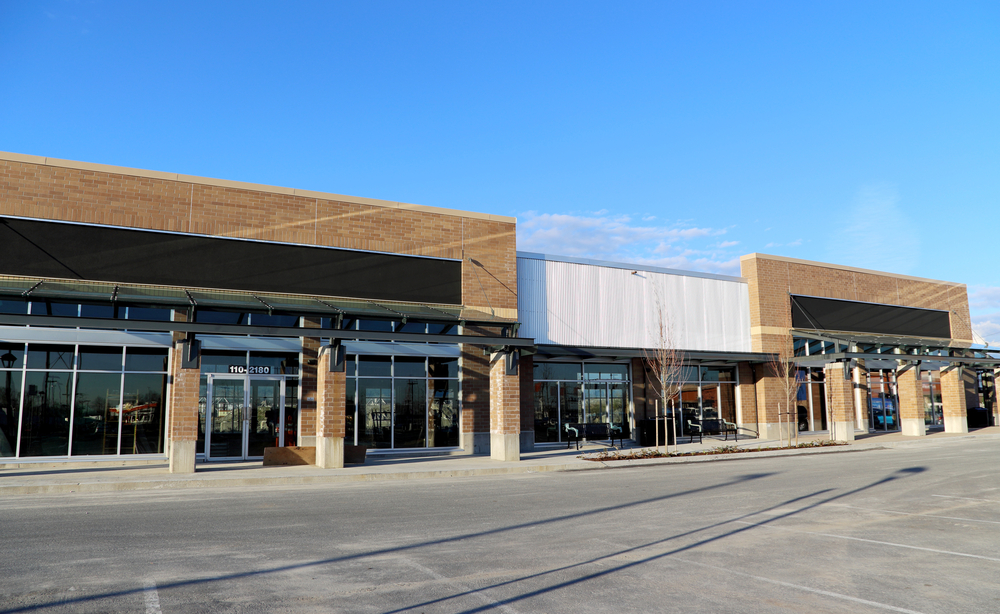
A lot has changed in retail real estate since this blog was first published in 2019. We’ve refreshed it in 2025 to reflect new trends, tools, and best practices in leasing strategy.
Retail real estate has undergone massive shifts in recent years, and brokers’ and developers’ leasing strategies must evolve to keep up.
In today’s environment, where convenience and experience intersect and data is more accessible than ever, building a smart, future-ready leasing plan is essential for shopping center owners, developers, commercial real estate brokers, and franchise growth teams alike.
If your current leasing strategy still looks like it did five years ago, it’s time for a makeover!
Here are five updated tips for creating a retail leasing plan that works in today’s climate—and helps you recruit tenants, reduce risk, and grow smarter:
1. Start with Your Lease Portfolio: Know Where You Stand
A successful leasing plan starts with a clear understanding of what’s already in place. That means digging into your existing leases—rent structures, common area maintenance (CAM) charges, escalations, tenant improvement (TI) allowances, and co-tenancy clauses—and assessing both the revenue profile and strategic value of current tenants.
Some leases might be ripe for renegotiation or repositioning. Others may point to opportunities: a soon-to-expire anchor, or a tenant mix imbalance. Consider building a tiered leasing plan—one that combines long-term, stability-focused tenants with shorter-term leases that allow you to stay agile.
Especially in a market where consumer preferences shift quickly and costs are unpredictable, having lease flexibility built in is no longer a luxury. It’s a requirement.
2. Use Data to Analyze Your Trade Area—and Spot What’s Missing
Gone are the days of relying on gut instinct or basic demographics alone. Today’s leasing plans must be driven by geo-verified insights.
Where are your customers coming from? How are they interacting with your center? Which demographics are growing or shrinking in your trade area?
Using trade area analysis powered by cell phone mobility data, psychographics, behavioral insights, and planned residential construction data, you can understand how people live, work, and shop near your property. From there, void analysis helps pinpoint which types of retailers are missing in the market—an invaluable tool for shaping your recruiting strategy.
Are there service categories with unmet demand? Concepts that perform well in similar areas but are absent from your market? That’s where leasing gets strategic.
Take the time to review any leases your property has today. At a minimum, assess the following:
- Rent, including any escalations
- Length of the lease (and how much time is left on each lease)
- Gross vs. net lease terms (e.g., how much is common area maintenance (CAM)?)
- Security deposit amount and conditions
- Restricted uses
- How much will you give for pay for tenant improvements?
Make sure you pay careful attention to the unique lease terms for any anchor tenants (if you have those spaces filled). In addition, you need to assess (to the best of your ability) the stability of those tenants and research the competitiveness of your rents. Are the rents you re getting comparable to those of similar shopping areas?
3. Know the Competitive Landscape, and Learn from It
It’s no longer enough to understand who your competitors are. You need to understand how they’re positioned, and whether their presence creates saturation or opportunity. Evaluate surrounding centers: What types of anchors do they have? What’s their tenant mix strategy? Are they thriving or struggling?
In some cases, a nearby competitor might actually complement your center, drawing shared foot traffic. In others, it may mean a category is overserved.
Look beyond the tenants themselves. Consider formats, digital integrations, and consumer experience. For example, if a competing center leans heavily into national chains, your opportunity may lie in curating a mix of unique local retailers or experiential concepts.
4. Get Intentional About Tenant Mix and Anchor Strategy
Your shopping center’s performance doesn’t just depend on who your tenants are. Tenant mix strategy is about designing an ecosystem, not just checking category boxes. That means thinking in terms of traffic flows, dwell time, and co-tenancy synergy.
Consider the evolving role of anchors. A fitness concept or entertainment venue may drive more traffic than a traditional big-box store. And the small-but-mighty tenants (like those that offer digital pickup, quick service, or convenience) often play a larger role in repeat visits that you assumed they might.
For franchise developers, it’s also key to strike a balance: national tenants may bring brand draw, but a few well-curated local or regional concepts can bring freshness and community connection.
5. Build for Flexibility and the Unexpected
The retail market is unpredictable…always has been! Whether it’s economic headwinds, interest rate volatility, or tenant turnover, your leasing plan needs to be built with adaptability in mind.
That means leaving room for short-term tenants and pop-up activations. It means being open to testing new concepts. It may also mean identifying backfill strategies before they’re urgently needed.
Keep a close eye on the market. Retail bankruptcies and closures often present valuable backfill opportunities, but only if you’re prepared to move quickly. A modern leasing plan isn’t just a roadmap.. It’s a toolkit for responding to change, fueled by data and guided by strategy.
Use the Tools at Your Disposal
In a world where foot traffic can be tracked in real time, and customer movement patterns can be mapped with precision, retail real estate professionals have more tools than ever to make smarter leasing decisions. Use them!
Combining a strong lease foundation, in-depth trade area and void analysis, competitive intelligence, and a modern tenant mix approach, your leasing plan can position your center not just for occupancy, but for long-term success.
Use SiteSeer for Developing Smarter Leasing Strategies
Creating a leasing plan in 2025 demands insights that are grounded in data. That’s where SiteSeer comes in.
Whether you’re a shopping center developer filling space in a new shopping center or a broker advising a franchise tenant, SiteSeer gives you access to the same tools retailers use to make expansion decisions.
With SiteSeer, you can:
- Understand your trade area with mobility data, psychographic/demographic data, construction project lead data (commercial and residential, and other types of data
- Run void analysis to identify the right tenants for your market
- Evaluate co-tenancy to ensure your tenant mix is synergistic, not cannibalizing
- Profile customers to match your center with retailers targeting similar demographics
- Analyze the competitive landscape to find market gaps and avoid oversaturation
Retailers are using data science to make smarter decisions, and so should leasing teams. If you’re ready to lease with purpose, SiteSeer can help you align your strategy with market realities and tenant expectations. Contact us for a demo today to see how our powerful platform can help you!


